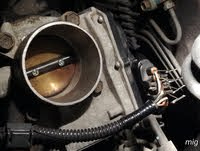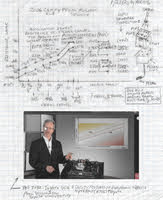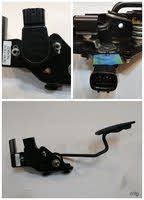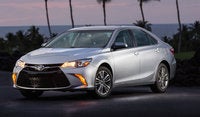Acceleration problem..Can duplicate with motor off.
Status.. 1/31/2020
Working on a problem with car acceleration. I am a retired Electrical
Engineer (Computers) - feeling like I am back to work again. 2006 Toyota
Camry XLE with 60000 miles. Car idles fine at 800. Problem: I press pedal
50% half way down and then engine accelerates. But if I play with the pedal
at 10% it starts to work normally. I can duplicate the problem by just turning
ignition on.. Motor off and viewing live data TPS% (throttle Position sensor)
on a ODB2 scanner (INNOVA 3160g) or backprobing voltages at the TPS
connector . Analyzing it before spending lots of bucks to fix it or doing it
myself. It's all electronic. I get no trouble codes. No check engine light. It's
either 1 of 3 things. A. Pedal sensor. B. Throttle body and sensor. C.
Computer in car. ...
To troubleshoot I did the following.
A. I removed pedal and measured redundant separate potentiometer
resistances (6 pins.. A - 3.72k. Ohms B-3.8k.. Signal resistance varied ok.
Graphed on paper resistance at several pedal positions and it was linear)
Working fine. Found video at Toyota web site which agreed with my graph
results! Not the problem.
B. Next I cleaned throttle body with CRC cleanser. Was black after 60000
miles. (Used pedal ignition on motor off to open vane for cleaning) Now nice
and clean.
C. Next I cleaned MAF Mass Air Flow sensor with CRC cleanser.
D. Air filter is clean. Checked all car fluids.
E. Next I measured resistances of TPS throttle body sensor (2.9k ohms
which is 2 pots in parallel) and DC motor resistance (was 3.8 ohms.. Ok 2-25
ohm range acceptable). By the way it is not serviceable since it is riveted to
throttle body.
D. Next on the TPS I back-probed all sensor pins (with T-pins from Office
Depot ) throttle body sensor voltages (4 pins sharing +5v reference and
ground) with ignition on.. Motor off. All voltages looked fine since sensor
voltages are measuring nice and steady on both as I depress pedal ignition
on motor off except for the 50% pedal problem. I could duplicate the bad
condition easily. Depress pedal 100%. Release.. Then pedal to 50%. Low
voltage from sensor. If play pedal around 10%.. Voltage response goes back
to normal from 0% to 100%. It does not look like a sticky throttle vane.
F. Not a fuel problem since I do not need motor on to duplicate problem.
G. Conclusion so far Is the vane motor getting bad signals from computer? I
suspect it is with the throttle body motor (but it measures fine dc resistance)
or the computer is not telling the vane motor what to do. From what I have
read motor it is a PWM pulse width modulated signal that tells the motor how
much to turn in response to the pedal.
** Getting closer to resolving this but not there yet. Will keep at it. I can
replace myself throttle body and gasket for Toyota OEM part online discount
at around $356.74 (local dealer 575.99) or bring to dealer for probably over
$1000 repair for diagnosing etc. If changing TB does not fix it.. Then only
thing left is computer .. A costly repair. That is my thinking.
** What next? Any suggestions - appreciated? Question Can I measure with
a DVM motor voltage to see my failing condition. Have not tried that yet.
** I am attaching a photo of my back-probing setup with T-pins.
Mariog (GuruPKPHX)



